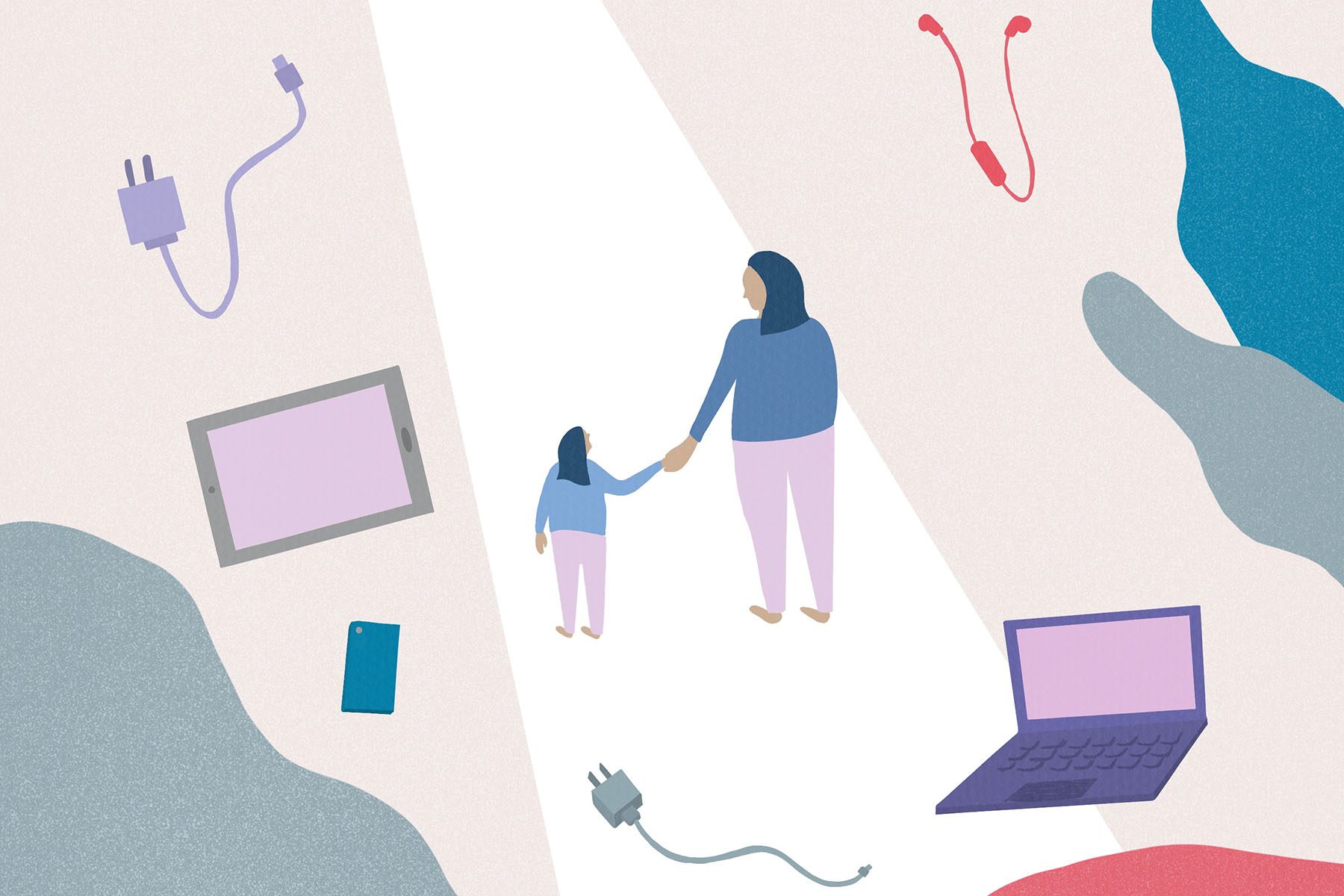Families eligible for the expanded child tax credit who still haven’t received payments can still sign up to get the money through an updated portal unveiled by the White House on Wednesday designed to make the process even simpler.
The portal, GetCTC.org, will allow families who typically don’t file taxes to sign up to receive the credit without having to fill out an entire tax form. It’s launching after the end of tax filing season, which concluded April 18, for those who don’t have a tax obligation but who want to get the child tax credit, which was expanded temporarily last year. People can also get any pandemic stimulus payments they are still owed through the portal.
The child tax credit was changed significantly in 2021, making it fully available for the first time to the lowest-income families, including those who typically do not have to file a tax return. The amount increased from a maximum of $2,000 per child to $3,000 for kids ages 6 to 17 and $3,600 for children under the age of 5. It was distributed in two ways: the first half in monthly increments from July to December and the second half as a lump sum.
Families who file taxes received the lump sum with their tax refunds, but families who don’t file taxes and are newly eligible for the child tax credit would have to file in some way to receive the money. That posed a major barrier for the people who are most likely to benefit from the credit, many of whom are women of color and who are very low-income.
The portal aims to alleviate some of those barriers by providing a simplified way for people to file. It was developed by tech nonprofit Code for America, which has worked with the White House previously to roll out portals designed to make the sign-up process easier for those who aren’t familiar with the tax filing process.
The newly opened portal is a version of one Code for America ran for 10 weeks in the fall, while the monthly child tax credit payments were going out. During that time, more than 115,000 families used the portal to claim the child tax credit, with 78 percent saying they found it easy to use and 99 percent getting through the process without needing assistance.
According to a survey of 12,000 people who used the portal, a quarter had never filed taxes in their lives and more than half were people of color.
The new portal that launched this week is similar. It’s free, available in English and Spanish, and works on desktop or mobile devices. To be eligible to use the portal, families must not be required to file taxes, meaning they typically earn less than $12,550 for single filers, $25,100 or less for married couples or less than $400 in self-employment income.
David Newville, the senior program director for tax benefits at Code for America, told The 19th that the portal will probably be updated in the coming weeks to also accommodate Puerto Rican filers, who are now able to file through a simplified form like the one on GetCTC thanks to an updated rule from the Treasury Department released last week.
This time, the portal will be available for about six months — instead of 10 weeks — and it’s also rolling out in conjunction with an outreach campaign designed to capture the hardest-to-reach and most vulnerable people.
-
Read Next:
Those improvements might help more people actually access the funds. About 79 percent of those who used the portal last year did not actually get the child tax credit, though most got stimulus payments they were owed. Much of that was because the Internal Revenue Service was facing a backlog of complex cases, according to a report from Code for America. Because the portal was open only 10 weeks, people often did not have sufficient time for the IRS to resolve the cases then file and get the credit. Most of those people can use the new portal to apply again.
One of the populations hit hardest was undocumented families who use Individual Taxpayer Identification Numbers (ITIN) instead of Social Security numbers. Undocumented people are elgibile for the child tax credit as long as their kids have Social Security numbers, but to apply they needed to have a valid ITIN. The process of applying for an ITIN was so backlogged last year that it was taking months, preventing filers from getting their numbers in time to file using GetCTC, Newville said. The other main issue was people who tried to claim dependents that were already claimed by other parents or guardians or who tried to claim the CTC without claiming dependents.
Efforts were also hampered by misconceptions that filing for the child tax credit could get people in trouble with immigration services. Accessing the child tax credit does not harm a person’s status in the United States or their ability to access other public assistance programs.
This year, the portal is opening after the IRS has already made some improvements to the ITIN renewal process and is out from some of the crush of the past several months, when it had significant caseloads around pandemic-related benefits such as stimulus payments and the monthly child tax credit payments.
That should help the portal run smoother and reach more people, Newville said.
“We’re hoping with education and more awareness and people hearing from more people in their communities and trusted folks at community institutions being like, ‘No, it’s OK, if you claim that it’s not going to affect your immigration status,’” there will be more uptake, Newville said. “A lot of the barriers to getting people to use this tool regardless of their background are trust issues.”
Reaching those people has been the key challenge — and opportunity — at the center of the expanded child tax credit.
The one-year expansion that made it possible for the lowest-income families to get the money came with a promise that, if those people were reached, child poverty rates could be slashed in half, impacting Black and Latinx kids most of all. But precisely because many of those families don’t file taxes, ensuring they signed up for a benefit that until now has been a fairly obscure part of the tax code was going to prove difficult.
Launching this new portal is part of that continued effort, said Gene Sperling, the American Rescue Plan coordinator in charge of overseeing the implementation of Biden’s economic package, in an event Wednesday announcing the portal.
“One thing we all learned from the start was that you can’t just have a first-mile strategy without a last-mile strategy,” said Sperling, who said the White House has been working consistently since the child tax credit was expanded through the American Rescue Plan in March 2021 to develop better methods of reaching families. Among the learnings: Texting families with links and partnering with state and local benefit agencies has been the most effective.
“We now go to an approach to try to let people know about the simplified filing option … to do everything we can to get people to sign up,” he said.
-
More from The 19th
- Inflation is hurting women at the grocery store. Some are eating less in order to feed their families.
- A historic child care investment saved centers from collapse. What happens when the money runs out?
- Colorado may soon be the first state to guarantee its lawmakers 12 weeks of paid parental leave
Code for America is also launching a 50-state campaign to partner with state benefit agencies, which are often the best point of contact to reach low-income people. So far, nine states have signed on.
This last push marks the end of the effort to get out the word on the expanded child tax credit, which will revert back to its former parameters next tax filing season.
A permanent expansion of the credit was included in a package Democrats have been trying to pass since last year, but those efforts were stymied by unified opposition from Republican senators as well as from Sen. Joe Manchin. Manchin, a Democrat from West Virginia, wanted the credit to include a work requirement to see it restructured so that higher-income families could not access the funds. A study by the Urban Institute released this week showed that the credit led to no significant difference in employment for parents.
Earlier this year, Utah Republican Sen. Mitt Romney reintroduced his Family Security Act, which would change the current credit to provide a $350 monthly payment to kids under 5 and $250 monthly credit to kids 6 to 17, plus a $1,400 payment to parents after a child is born. But it would also introduce work requirements for parents to receive the money and be funded through cuts to other programs for low-income people, including an end to federal funding for the Temporary Assistance for Needy Families program.
So far, the two parties have not come to a compromise on a credit expansion and discussions appear to be tabled.
For families like Natacha Chavez’s in Phoenix, Arizona, the monthly payments helped cover a variety of needs for her children, including her 8-year-old daughter’s dental work and her 11-year-old son’s eye exam and a new pair of glasses. Other times it helped with covering groceries or the rent.
“Because it was helping with day-to-day life, it made the big things not seem so impossible,” said Chavez, 37.
But Chavez, who worked as a community organizer for the Arizona chapter of CARE, the international nonprofit that works with low-income women and girls, lost her job in December just as the monthly credits ended. Then inflation started to spike.
Her family was thrust back into the economic volatility that the expanded child tax credit promised to help ease. Now with it ending, parents are feeling frustrated, said Chavez, who is now running for office representing her district in the Arizona state House.
“We had a feeling of people feeling like there is upward mobility and that America is getting back on track,” she said. Losing it? “It’s heartbreaking.”
There may still be an opportunity for those discussions to be renewed. The visibility of the child tax credit over the past year raised awareness around the policy for American families, said Christopher Wimer, the co-director of the Center on Poverty and Social Policy at the Columbia University School of Social Work, which has done significant research on the impact of the policy expansion.
“The whole experiment that happened in 2021 has really made the child tax credit move from an afterthought kind of policy. It has an incredible amount of power to reduce child poverty — that’s been shown,” Wimer said. “I think there will be continued momentum to help it expand and reach more children.”
This week, the center released new research that shows that monthly tax credits are the most effective way to reduce the chances children will be persistently poor and become poor later in the year.
Its research modeled what would happen if the child tax credit and the broader earned income tax credit were distributed monthly every year and found that child monthly poverty rates dropped by eight percentage points on average and the chances that kids would not experience poverty at all during the year improved by nine to 12 percentage points.
The long-term implications, said study lead author Christal Hamilton, are improved health, well-being, educational and mental health outcomes for children because of improved economic stability.
“Families know best what they need and needs change and shift over time. People use it for rent in one month and in order to make sure there is enough food for Thanksgiving another month,” Wimer said. “Those needs change and people need some of the flexibility to make those sorts of choices.”









